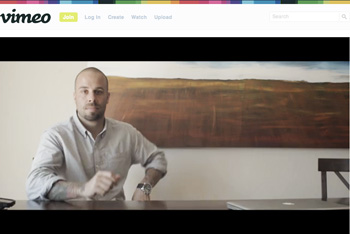Trash Talking the Pillsbury Doughboy
 “WONDERLAND” is a gift. But not to those artists among us who already make our way in a commercial art world. Rather this colorfully wrapped package is tagged for young creatives, filmmakers, musicians, writers, et al, just coming on the scene. Especially the ones fresh out of art school, eagerly scanning the horizon for the glow of limitless possibility and absolute creative freedom; you know, in their flashy new career making music videos with Marina Abramović. Only I think this is a graduation present at which they might curl their lip.
“WONDERLAND” is a gift. But not to those artists among us who already make our way in a commercial art world. Rather this colorfully wrapped package is tagged for young creatives, filmmakers, musicians, writers, et al, just coming on the scene. Especially the ones fresh out of art school, eagerly scanning the horizon for the glow of limitless possibility and absolute creative freedom; you know, in their flashy new career making music videos with Marina Abramović. Only I think this is a graduation present at which they might curl their lip.
Actually, I’m sure they’d like the video itself, a tight, well-crafted documentary by filmmakers Eskimo. What they won’t like is the less than glamorous message imbedded in this art school confidential. “Wonderland’s” working creatives describe days of joy juice but also of compromise.
Still, there is revelation, redemption, and healing in it, if our overly idealistic youth will just take their medicine. Gabe Imlay of New York post-production company The Wilderness says of the work-a-day world, “It’s more a collaboration process than art…so you have to make this separation in your mind and then it’s okay.” Los Angeles filmmaker Eliot Rausch ups the ante, “…you shouldn’t be thinking of it as your art. You shouldn’t be looking for your own personal artistic satisfaction from client work. There are other hours in the day…there are other ways to find that.”
Odd-man out is director David Lewandowski, creator of the wacky, viral short film Going to the Store. Whether it’s the blue pill or the red pill he’s taken, he’s hiding it under his tongue. Sure, at one point he grudgingly acknowledges, “…the commercial space is very much about letting go of all of your vision, I guess, and giving people what they want, and not being precious about it.” But the bulk of his face time is devoted to preaching a simplistic, moralistic diatribe against the imbalance of funding for innovative projects that he thinks should be changed:
“…it’s like a perfect sliding scale, and the more creatively bankrupt a project is, the more money there is in play…and as you work your way down there’s less money in play but there’s more creative…and you get all the way down to like the zero mark. And the zero mark is where it’s very, very creative for the most part but there’s almost no money…And that’s where all the artistic integrity is and where you’re going to do something pure and that you’re really excited about…”
Yeah, minus the value judgments I think he’s got it about right, at least in a world where commerce pays more bills than culture ever could. But Lewandowski wants to have his cake, eat it, too, and then trash talk the Pillsbury Doughboy because of the recipe. Perhaps his world is a kind of black-and-white comic, in which most funding is unfairly diverted to the Lex Luthor Advertising Agency’s corrupt “pharmaceutical ads, smoking ads.” He positions further down on his axis of evil the big brands he himself happens to consume, the noble ones, “Coca Cola, Nike…MTV, youth brands…Red Bull, Adidas I guess sometimes,” where there’s “…less money in play because it’s like cooler opportunities, cooler projects.” Never mind the fact that several of these brands represent industries who’s advertising budgets rival those of his villains, while, at the same time, not being as regulated.
I’m only pummeling Lewandowski because his all-or-nothing viewpoint is one that already burdens fresh young talent as they enter the professional arena. I believe that may be because some embittered souls among “those that teach” have been drilling it into them for three or four years. Not helping. If there’s one thing the creative industry doesn’t need it’s more new recruits entering with a sense of entitlement and a conviction they’re here to battle everybody else around the conference table for the supremacy of their own cool visions.
Eliot Rausch is more understanding and gives a pass: “I think it’s natural for an artist…to think…if I can just get away from all this money and these people, these things, and I’m just by myself with my canvas, with my little film, then it will be better.” But Wilson Brown, a composer with Antfood, a music and sound design studio, offers the more grown-up, verbal infographic to Lewandowski’s: “If you are committed you just make work and you get better and better at your craft and when you’re good enough at your craft people start to recognize that and they start to ask you to do your craft for them. And then I guess that’s the transition where it becomes a profession.”
Today’s young creatives aren’t nearly as clueless as I was when I entered the job market, completely unaware that there was such a thing as a Robert Rauschenberg or a Cy Twombly. If they could sit through the Smilebox slideshow of what followed, they’d see me establish myself as a creative director, then in my forties launch that long-awaited fine art career, then return to find more balance, for the time being, in client work. But clueless or not, I for one think they know just enough to be dangerous, as some too quickly consider it selling out to invest their talent in the commercial world. “Wonderland” might straighten them out a on that point.